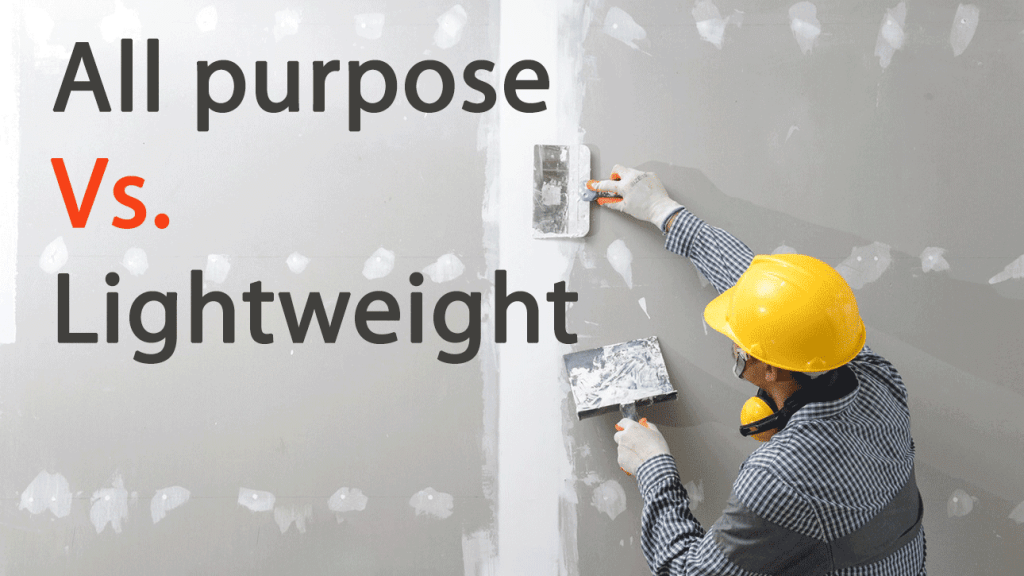All purpose joint compound material
All purpose joint compound is a type of drywall mud used for various purposes in drywall construction and repair. It is a lightweight, high-performance material that works and sands easily. Some key features and benefits of all-purpose joint compound include:
Versatility. It can be used for repairing cracks on drywall and plaster, embedding paper joint tape. and also applying drywall filling and finishing coats.
Performance. It provides excellent bonding capabilities when used with gypsum panels.

Open Time. It has a good open time, allowing for easy application and blending with other materials.
Cold Bond. It has a strong cold bond, which means it can be applied and bonded at lower temperatures.
Smooth and Slick Properties. It has smooth and slick properties, making it easy to apply and sand.
All-purpose joint compound is available in various forms. such as ready-mixed and premixed options, and can be used for all three coat applications and for skimming. It is essential to follow the manufacturer’s instructions for proper application and curing to ensure the best results.
All purpose joint compound is a product used for taping and finishing drywall. Before applying, it should be stored at 55-95°F (13-35°C) for 24 hours and remixed. Thinning with water may improve application, but over-dilution causes abnormal shrinkage and poor performance. To use, clean the area around the seam, apply a small amount of joint compound into the seam. cut and apply drywall tape to the seam, apply the joint compound in sections, feather the product over the seam. and allow the joint compound to dry.
Lightweight joint compound
Lightweight joint compound is a type of drywall mud that is approximately 30% lighter than conventional joint compound. It is a ready-mixed, high-performance, all-purpose compound that offers superior working qualities and good open time. Some key features and benefits of lightweight joint compound include:
Lightweight. It is easier to handle and apply than conventional joint compound.
Reduced Shrinkage. It has up to 33% less shrinkage than conventional joint compound.
Mold Resistant. It is mold-resistant.
Superior Finish. It provides a finish with less pocking and pinholing.
Easy to Apply. It spreads easier for quick application and has excellent sanding characteristics.
Lightweight joint compound is suitable for all three coat applications and for skimming. It is essential to follow the manufacturer’s instructions for proper application and curing to ensure the best results.
Differences between all purpose joint compound and lightweight joint compound
The differences between all purpose joint compound and lightweight joint compound are as follows:
Adhesive Properties. All-purpose joint compound, is better at adhering to tape and drywall. making it suitable for bedding and all phases of drywall finishing.
Weight and Workability. Lightweight joint compound is drier, lighter, shrinks less, and sands easier than conventional all-purpose compound. It is suitable for embedding tape and for filling, leveling, and finishing over gypsum panel joints, fasteners, bead, and trim.
Usage. All-purpose joint compound acts as a single product solution for both taping and topping coats. and it can also be used in simple hand-applied textures. On the other hand, lightweight joint compound only requires two coats over bead and fasteners and bonds. like a taping product for a tough, tight bond for most job conditions.
In summary, the choice between the two types of joint compound depends on the specific requirements of drywall finishing job. All-purpose joint compound and lightweight joint compound are two types of joint compounds used in drywall finishing. All-purpose joint compound is a versatile product that can be used for all phases of drywall finishing. including embedding tape, filling fastener holes, and repairing minor wall damage. It has more adhesive in it than lightweight joint compound, making it better for bedding. Lightweight joint compound is drier than other compounds. making it good for texturing, but it doesn’t perform well in automatic taping tools. It requires fewer coats than all-purpose joint compound. and it is lighter in weight, shrinks less, and sands easier than conventional weight all-purpose joint compound.
